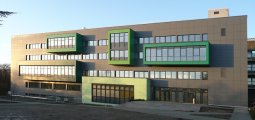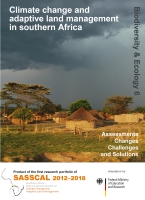
|

Department of Biology Institute of Plant Science and Microbiology |
| Division BEE > Biodiversity & Ecology > Vol.6 > Article 7.1 |
Biodiversity & Ecology
Journal of the Division Biodiversity, Evolution and Ecology of Plants , Institute for Plant Science and Microbiology, University of Hamburg.
Land cover dynamics Research article Open Access A radar- and LiDAR-based earth observation system for monitoring savanna woody structure in southern Africa
Resumo: Na África Austral, as paisagens são dominadas por savanas, isto é, por comunidades de herbáceas e de lenhosas. Estas são ameaçadas pelo desmatamento e a degradação da terra, mas também, em muitas áreas, pela densifi cação de espécies lenhosas, conhecida por bush encroachment (invasão de lenhosas). Existe, porém, informação espacial muito limitada sobre a distribuição e as alterações da cobertura de espécies lenhosas. Neste artigo, relatamos o desenvolvimento de um sistema operacional desenhado para mapear e monitorizar a cobertura vegetal lenhosa à escala regional. Baseia-se no uso combinado de dados aéreos da tecnologia LiDAR (Light Detection and Ranging) disponíveis gratuitamente, e de imagens de satélite de SAR (Radar de Abertura Sintética). A integração destes dois conjuntos de dados fornece uma solução efi caz para avaliar a distribuição da savana e cobertura fracionada de lenhosas no Sul de África, para além do nível de detalhe e precisão actualmente disponíveis. A cobertura de lenhosas foi mapeada à escala nacional para a África do Sul e Namíbia em 2010 e 2015, com o tamanho de pixel de 1 ha (100 × 100 m).
Suggested citation: |
